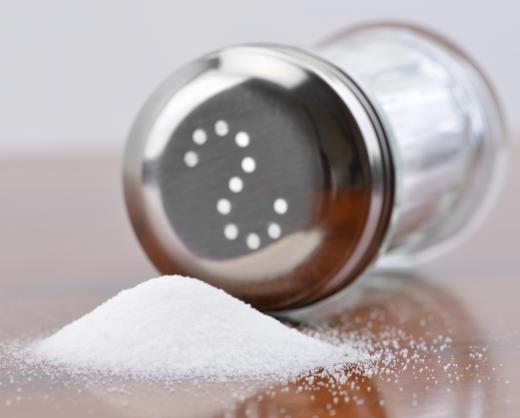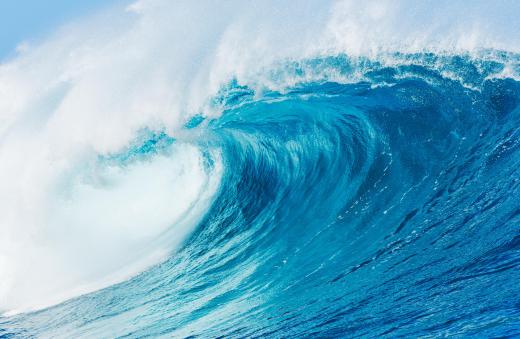What are the Chemical Properties of Seawater?
 Michael Anissimov
Michael Anissimov
Seawater is mostly (~96.5%) water, but it contains important amounts of dissolved salts (~3.5%), which are mostly, but not all, sodium chloride, which is identical to table salt. The unique chemical properties of seawater mean that it is a drastically different living environment than fresh water, and many animals that live in it have never adapted to live in fresh water. Species adapted to fresh water, such as fish in landlocked lakes in Africa, cannot survive in salt water. Seawater is about 2.5% denser than fresh water.
Aside from calcium chloride salts, seawater also contains sulfates (7.7% of dissolved salts), magnesium (3.7%), calcium (1.2%), potassium (1.1%), and minor constituents (0.7%), including trace amounts of inorganic carbon (0.2%), bromide (0.08%), uranium (0.00000001%), and gold (similar amount). Various schemes have been proposed to extract uranium or gold from this water, but neither has proved economically viable. Fritz Haber, the German scientist known for his invention of the Haber process and Zyklon poison gas, spent the last years of his life attempting to come up with an efficient way of extracting large quantities of gold from seawater so that Germany could pay off its war debts. Of course, this effort failed.

The origin of the salts in seawater are both the land and salts that were present on the surface of the Earth when the oceans first formed, which could have been as soon as 100 million years after the Earth's formation. The theory that the salts derive from rainwater runoff originated with Sir Edmund Halley in 1715. Specifically, the sodium in the ocean's sodium chloride is mostly derived from when the oceans were formed, and the chloride comes from volcanic outgassing on the ocean floors.

It is well known that seawater is dangerous for human consumption. Because it contains 3.5% salt, and the human body strictly keeps sodium chloride at 0.9% of the blood by weight, the kidneys must expend extra water to dissolve the excess salts. According to historical data of life raft voyages, the chance of death for those that drink seawater is about 39%, while the chance of death for those that don't is only 3%. When lost at sea, scientists instead recommend drinking it mixed with fresh water, in a 1:2 ratio, slowly increasing as the fresh water runs out. This is milder than the metabolic impact of switching from fresh to pure salt water, and increases the likelihood of survival.
AS FEATURED ON:
AS FEATURED ON:













Discuss this Article
Post your comments